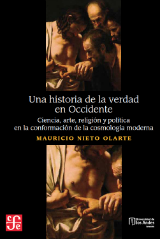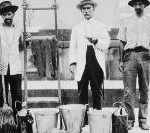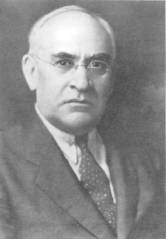História, Ciências, Saúde – Manguinhos is pleased to announce Elizabeth O’Brien as one of its new associate editors. She is Associate Professor of the History of Medicine and Latin American History in the Department of History at the University of California, Los Angeles, where she is also part of the department’s cross-field group in the History of Gender and Sexuality.

A distinguished historian of medicine with a strong focus on Latin America, O’Brien brings to HCS-Manguinhos her interdisciplinary perspective grounded in the histories of gender, race, religion, and reproductive health. Her research explores themes such as fertility control, eugenics, obstetric violence, and popular demands for healthcare in Mexico.
She is the author of the award-winning book Surgery and Salvation: The Roots of Reproductive Injustice in Mexico, 1770-1940, which analyses how theology, empire, and medical practices influenced reproductive policies and experiences in Mexico. O’Brien has also published a variety of articles in leading journals, including Obstetric violence in historical perspective (The Lancet, 2022), Pelvimetry and the persistence of racial science in obstetrics (Endeavour, 2013), and The many meanings of Aborto: pregnancy termination and the instability of a medical category over time (Women’s History Review, 2021).
In this interview, Elizabeth O’Brien reflects on the key ideas behind her recent work, shares current projects, including a graphic novel adaptation, and expresses great enthusiasm about joining the editorial board of História, Ciência, Saúde – Manguinhos, which she considers the premier journal in the history of science and medicine not only in Latin America and the Caribbean, but globally.
Could you please expand on one or two key ideas of your book, for example, how religious ideas shaped obstetric surgery?
That’s a big question, but in my mind it is an important one. I would argue that religious ideas shaped obstetric surgery since the modern origins of cesarean surgery, which was modernized not by just physicians, but instead, by priests who performed cesarean surgery and who were sometimes aided and assisted by midwives and physicians. This arose in the politics of the Spanish empire, in which Carlos III and IV mandated that priests were required to perform cesarean operations on dead and dying women in order to baptize the souls of the unborn, even if they were “as small as a grain of barley.” This embedded into modern surgery a kind of epistemological conflict between the mother’s corporeal life and the fetuses’ spiritual one. Most of all, it contributed to making the womb into a battleground of political and religious struggle. Even almost 200 years later, after the Mexican Revolution, eugenic sterilization was sometimes pursued with a nod towards papal prerogatives. I argue that this was the case in an experimental surgery called “vaginal bifurcation,” which responded to Casta Cunnibi by seeking to preserve the functionality of the vaginal canal as a sexual organ even while (temporarily) sterilizing women according to eugenicist principles. Of course today we still see the pervasive influence of religious ideas in reproductive healthcare, in part because women’s bodies come to represent future social issues (economic and social, especially), and so exerting politicized control over reproduction is one way to stake claims in broader cultural power struggles.
What are you working on? Are you preparing a new book?
I am working on a few projects that I began before publishing Surgery and Salvation. I am finishing up a co-edited volume with Bloomsbury Press, which is entitled A Cultural History of Pregnancy and Childbirth in the Modern Age. This is an exciting project because it is part of a six-volume series covering this topic from antiquity to the present day. I am also continuing work on an important primary source from the eighteenth century, Embriologia Sacra (1745), by Sicilian priest and inquisitor Francesco Cangiamila, in a collaborative project with Dr. Altina Hoti and Professors Paola Bertucci, Ivano Dal Prete, and Adam Warren. Finally, I am working on a graphic novel interpretation of Surgery and Salvation. My colleague Alex Huezo put me in touch with an incredible illustrator, José Arboleda, and we’ve been writing the script in Spanish while he does illustrations.
Your appointment as associate editor of História, Ciência, Saúde – Manguinhos is a valuable contribution due to your academic trajectory and your strong ties to the community of U.S.-based historians of medicine working on Latin America. How do you view the journal História, Ciências, Saúde – Manguinhos, and how can this publication contribute to the dialogue between Latin American and European scholars?
I am beyond thrilled to have been appointed to the editorial board of História, Ciência, Saúde – Manguinhos. I view Manguinhos as the premier journal of the history of science and medicine, not just in Latin America and the Caribbean, but in the world. In part, that’s because I think the best History of Sci/Med/Tech work happens in Latin America and the Caribbean; even in the U.S., histories of science in Latin America are increasingly becoming some of the most high-profile work in the field. This is reflected in the amazing Latin Americanist history of science faculty at a range of institutions, from UNAM, to Harvard, Penn State, UW Seattle, UW Madison, WashU, UNC, the UC system, and U-Florida as well as Florida International and Florida Atlantic (among many others, of course). The sheer volume of high quality publications reflects the vision of the journal’s editors and the constant labor they invest in bringing articles to the public. It has long been a dream of mine to publish research in Manguinhos. Starting this year I will have another editorial role (as lead editor of the Hispanic American Historical Review) and in both roles I look forward to witnessing and promulgating conversation across publication venues in the field.
See related articles and posts in HCS-Manguinhos:
Intervencionismo obstétrico en Uruguay, 1920-1940 – En el artículo Intervencionismo obstétrico y maternalización de las mujeres en la atención del parto en Uruguay, 1920-1940, la investigadora Natalia Magnone de la Universidad de la República del Uruguay aportó nuevas miradas para entender por qué el modelo de asistencia al parto es intervencionista sobre los cuerpos de las personas gestantes.
Birth in Rio de Janeiro – Two articles published in HCS-Manguinhos explore birth, reproductive rights, and policies toward women in Rio de Janeiro. Their authors, Ilana Lowy (Cermes/Paris) and Cassia Roth (Universidade da Georgia) will be at Fiocruz on 16/05, participating in the event “Encontro às Quintas,” whose theme is “From interrupted justice to reproductive injustice: history, health emergencies and abortion in Brazil.”
Our women in science – On Women’s International Day, we highlight interviews we did with women researchers for our blog. The topics covered are as varied as their research areas.
Women in the history of science – This book, published by UCL Press, centers on the voices and experiences of women across a range of domains of knowledge. It is available for free download.
Science, gender and feminism in HCS-Manguinhos – In its 29 years of existence, Revista História Ciências Saúde Manguinhos has published numerous articles, special issues, and blog posts discussing different aspects of women and gender and interviews with prominent researchers about these topics.
A historiographic essay on the history of women, medicine, and gender – Some of the most important works and approaches.
Las mujeres en HCS-Manguinhos – Una selección de artículos, en español y en inglés, de investigadoras sobre temas relacionados con la mujer.
Reproductive rights after 1945 – Call for abstracts: Whose choice, whose rights? Global-historical and intersectional approaches to the emergence of reproductive rights after 1945, Glasgow, UK / online, 9 and 10 June 2022.
A place for birth – This paper explores women’s experiences in Casa de Parto David Capistrano Filho (CPDCF), a birthing house in Rio de Janeiro that offers a home-like environment, with a minimum of medical interventions during childbirth.
Methods of childbirth preparation – The article explores the dissemination of natural childbirth practices through an analysis of books and manuals.
Medicalization of pregnancy and childbirth in the pages of Claudia, 1961-1990 – This paper argues that pregnancy and childbirth were resignified, including the need for women to internalize the desire and obligation to be healthy during pregnancy and produce healthy children.
Labor, childbirth and infant mortality – This edition features two dossiers: the medicalization of childbirth, and child health and mortality.
The medicalization of birth in a socio-historical perspective – HCS-Manguinhos announces a call for papers for a special issue on birth.
A convenient way to give birth – The article discusses the development of the cesarean sections techniques in Brazil and its widespread use.
Childbirth in early republican Peru – Adam Warren discusses the transfer of French knowledge about professional midwifery to Peru with reference to the social, political, and cultural context.








